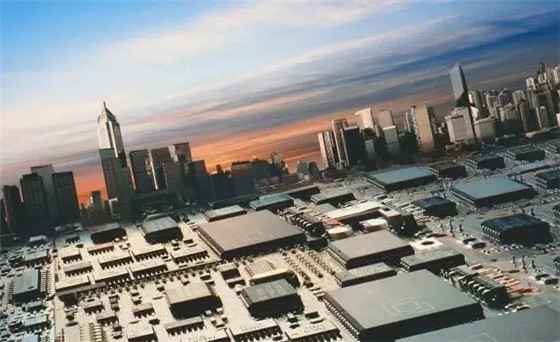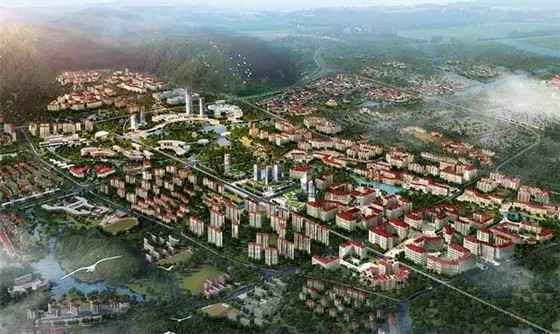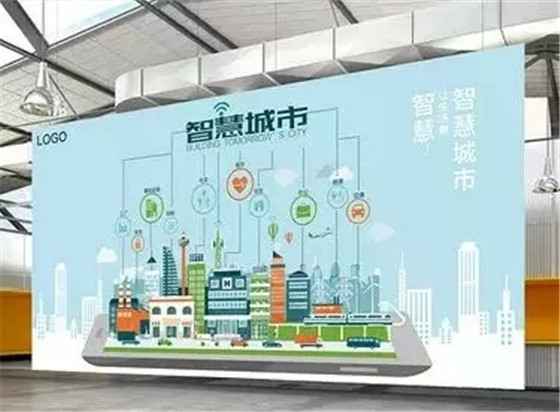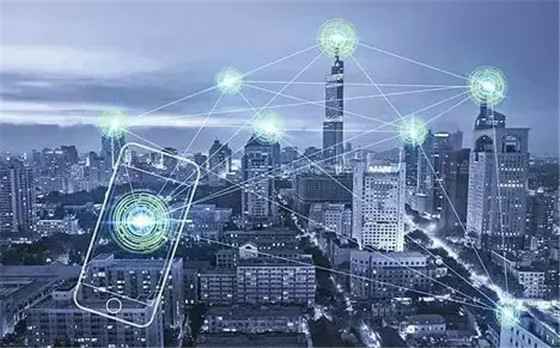Smart City
Analysis of well-known foreign smart city cases
1.Dubuque
The first smart city in the United States and the world's first smart city. It is characterized by its emphasis on intelligent construction. In order to maintain the livable advantage of Dubuque and have greater commercial development, the city government and IBM plan to use the Internet of Things technology to digitize and connect all the city’s resources, including water, electricity, oil, gas, and transportation. , Public services, etc., and then intelligently respond to the needs of citizens through monitoring, analysis and integration of various data, and reduce the city’s energy consumption and costs. The city took the lead in completing the data construction of hydropower resources and installed numerically controlled hydropower meters for households and shops throughout the city to not only record resource usage, but also use low-flow sensor technology to prevent resource leakage. The data recorded by the instrument will be reflected on the comprehensive monitoring platform in time for analysis, integration and public display.

2. New York
Through data mining, fires were effectively prevented. According to statistics, there are about 1 million buildings in New York, and an average of about 3,000 buildings will have serious fires every year. The New York Fire Department subdivided the factors that may cause house fires into 60 factors, such as whether it is a poor, low-income family house, whether the house is built for a long time, whether the building has an elevator, etc. Excluding small single-family villas or townhouses that are less harmful, analysts use a specific algorithm to individually score the 330,000 buildings in the city that need to be inspected, calculate the fire risk index, and divide the key monitoring and inspection objects. At present, data monitoring projects have been expanded to more than 2,400, and places with high population density such as schools and libraries are also covered. Although the public has doubts about the relationship between data analysis and the effectiveness of preventive measures, the number of fires has indeed fallen.
3. Chicago
Through "street light poles with sensors", urban data mining. In people's lives, ubiquitous sensors are applied to street lamp posts in Chicago. Through the "lamp post sensor", it is possible to collect urban road surface information and detect environmental data, such as air quality, light intensity, noise level, temperature, and wind speed. The information provided by the Chicago City Information Technology Committee shows that the "lamppost sensor" does not infringe on personal privacy. It only detects signals and does not record the MAC and Bluetooth addresses of mobile devices. In the next few years, the "light pole sensors" will be installed in batches, fully occupying large and small blocks of Chicago. The initial purchase, installation and commissioning cost of each sensor device is between 215-425 US dollars, and the average annual electricity cost after operation 15 dollars. The project has received technical and financial support from companies such as Cisco, Intel, Qualcomm, Zebra Technologies, Motorola, and Schneider.

4. Seattle
Using data to save electricity and energy. The city collaborated with Microsoft and Accenture on a pilot project to reduce energy use in the area. The project collects and analyzes numerous data sets obtained from the urban building management system, and through predictive analysis, finds out where energy use can be reduced, or where energy is not used at all. The goal of the project is to reduce electricity consumption in the area by 25%.
5. London
Use data to manage traffic. During the 2012 Olympic Games, the public institution "Transport for London" responsible for running the London public transport network used the real-time collection of closed-circuit television cameras, subway cards, mobile phones and social networks with a 25% increase in users. Information to ensure that train and bus routes are only interrupted to a limited extent, thus ensuring smooth traffic.
6. Gloucester
also made full use of sensors and established a "smart house" pilot. Sensors are installed around the house, and the returned information enables the central computer to control various household equipment. The smart house is equipped with a monitoring and communication network with a computer terminal as the core. The use of infrared rays and inductive cushions can automatically monitor the movement of the elderly in the house. The house is equipped with medical equipment, which can measure heart rate and blood pressure for the elderly, and automatically transmit the measurement results to relevant doctors.

7. Amsterdam
is one of the first cities in the world to start the construction of smart cities, and it is also a model of European smart city construction. As the largest city in the Netherlands, Amsterdam has more than 400,000 households and carbon dioxide emissions account for one-third of the country. In order to improve environmental issues, the city has launched two projects, WestOrange and Geuzenveld, to reduce carbon dioxide emissions and energy consumption through energy-saving smart technology. The EnergyDock project was also implemented. 154 power inlets were installed in 73 docking power stations in the port of Amsterdam to facilitate the charging of cruise ships and cargo ships, and use clean energy to generate electricity to replace the original polluting oil engines. In order to save energy, the smart building project was launched to reduce energy consumption to a minimum without negatively affecting the office and accommodation functions of the building. At the same time, based on the specific data analysis of the building’s energy use, The power system operates more efficiently. In order to build a sustainable public space, the Climate Street (TheClimateStreet) project was launched to alleviate the congestion on Utrecht Street.
8. Stockholm
has achieved outstanding results in controlling traffic congestion. The Swedish National Highway Administration and the Stockholm City Hall have not only alleviated urban traffic congestion, but also reduced air pollution through the construction of intelligent transportation. Now the intelligent transportation system has become the label of Stockholm. The city has set up 18 roadside monitors on the road leading to the city center, using technologies such as radio frequency identification, laser scanning and automatic photography to realize automatic identification of all vehicles. With these devices, the city collects a congestion tax on vehicles entering and leaving the city center from Monday to Friday between 6:30 and 18:30, thereby reducing traffic congestion by 25% and reducing greenhouse gas emissions by 40%. %.
9. Copenhagen
Known as the "City of Bicycles", it has made outstanding achievements in green transportation. In order to encourage citizens to use rail transit with the least carbon dioxide emissions, the city has adopted overall planning to ensure that citizens can use rail transit within 1 km of their homes. For traffic within a kilometer of road, promote the use of a smart bicycle. The wheels of this bicycle are equipped with batteries that can store energy, and radio frequency identification technology (RFID) or global positioning system (GPS) is installed on the handlebars, which can be converged into a "bicycle stream" to ensure smooth travel through a signal system. At the same time, the municipal government vigorously improved the construction of supporting facilities along the route, such as establishing service stations and providing simple repair tools to facilitate bicycle travel. It is estimated that by 2015, the proportion of Copenhagen citizens who choose bicycles to travel to and from the suburbs will reach 50%.

10. Lyon
Researchers from the city and IBM have teamed up to build a system that can help reduce road traffic congestion, using real-time traffic report to detect and predict traffic congestion. If operators see that traffic jams may occur, they can adjust traffic signals accordingly to maintain a smooth traffic flow. The system is especially useful in emergency situations, such as when an ambulance is on the way to a hospital. Over time, the algorithms in the system will "learn" from the most successful suggestions and apply this knowledge to future predictions.
11. Barcelona
Vigorously adopt sensors to make city management more convenient. In the test area of the city’s high-tech center, a small black box on a traffic light can send a signal to a receiver in the hands of a blind person nearby, and cause the receiver to vibrate to remind him that he has reached the intersection; something in the shape of a small protrusion on the ground is For parking sensors, drivers only need to download a special application to obtain information about vacant parking spaces based on the information sent by the sensors; Barcelona’s magnificent Sagrada Familia has also established a complete parking sensor system to guide buses to park; test area The grass is covered with sensors-humidity sensors, which can sense the temperature of the ground to determine when the grass should be watered; the sensors laid on the trash can can detect whether the trash can is full, and the trash can is also loaded There is an odor sensor. If the smell of the trash can exceeds the normal standard, the sensor will automatically send an alarm to remind you.
12. Santander
As the most data-intensive city in Europe, European universities and telecom operators have jointly installed approximately 18,000 fixed and mobile sensors of various types in urban areas with a funding of 8 million euros from the European Commission. In addition to monitoring air pollution, noise and other environmental conditions, the sensor will also indicate when the trash bin needs to be emptied or the street light is burned out or turned off. Sensors buried under the road can detect open-air parking spaces and forward the information to major intersections with digital displays to help guide drivers to find the nearest parking space. In addition, residents can use smart phones to use the "augmented reality" system composed of 2,600 optical and wireless tags located in tourist attractions, shops, bus stops, etc., to easily obtain various relevant information about these locations online.
与此原文有关的更多信息要查看其他翻译信息,您必须输入相应原文

13.Singapore
Singapore launched the "Smart Nation 2015 Plan" in 2006, and the government portal published more than 5,000 data sets from more than 50 government departments. Singapore has established a "citizen-centric" e-government system in which citizens, enterprises, and governments cooperate, so that citizens and enterprises can participate in the affairs of various government agencies anytime and anywhere. In the field of transportation, Singapore has launched a number of intelligent transportation systems such as the Electric Road Pricing system (ElectricRoadPricing). In the medical field, a comprehensive medical information platform has been developed. In the field of education, the use of information and communication technology has greatly increased students' attention to learning. In the cultural field, the National Library of China has deployed a flexible and powerful big data architecture. Through the cloud computing model, it can handle different analysis needs from strategy, tactics to actual business, and provide cost-effective solutions.
 Scan code and wechat
Scan code and wechat